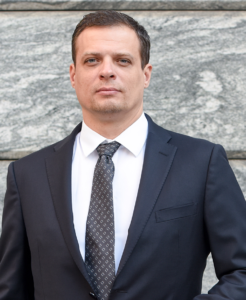Fire safety regulations are at the heart of a successful and safe society, yet they are rendered useless if they are not enforced. Are regulations too rigid? Are they progressive enough? What are the ramifications? Stakeholders share their views with Benwen Lopez of Climate Control Middle East.
On April 8, 2018, a three-alarm fire broke out on the 50th floor of the Trump Tower in Manhattan, New York, USA. The fire killed one person and injured four firefighters. According to the New York City Fire Department (FDNY), during a three-alarm fire call, 33 units with 138 firefighters are dispatched to the scene.
Shortly after the incident, Donald Trump put out a tweet, which praised the safety of his building and thanked the firefighters for doing their job. However, according to media reports, in 1998, Trump along with some high profile developers, opposed a regulation that required older residential buildings to be retrofitted with sprinkler systems. According to a statement released by the New York City Fire Department, had Trump accepted the regulation in 1998, there would have been no casualties.
The crux of the incident shows us how mission critical fire safety regulations are. While fire safety regulations have always existed, they remain a toothless tiger if they are not enforced. But given the evolution of the industry in the UAE, and Dubai, in particular, authorities like Dubai Civil Defence have resuscitated new life into the UAE Fire and Life Safety Code of Practice, which, industry insiders say, has become a uniform foundation for the industry. And although the code has its challenges, it continues to evolve, along with the evolution of the industry.

Terry Johnson, FIreE
Speaking on the introduction of the updated fire code, Terry Johnson, FIFireE, Dubai Civil Defence, echoes the voice of the fire department when he says, “The UAE Fire and Life Safety Code of Practice is geared to protect all citizens, and the UAE Government has made it very clear that they want to create a successful and fire-safe environment for the country.” The code, which has seen considerable maturity since the 2011 edition, Johnson says, is the result of strategic collaborative work between industry experts and Dubai Civil Defence.
Stepping up enforcement
Industry insiders affirm that the code has not seen development only on paper, but rather, the level of enforcement has been stepped up. Explaining how enforcement has stepped up, Abhishek Chabbra, Business Development, Thomas Bell-Wright International Consultants, says: “When the final closing inspection is carried out by Civil Defence authorities, tough questions are being asked to the stakeholders involved. Questions that were not asked two years ago, and these questions force manufacturers to go back and relook at the work that they have done, and this is happening because the code is being pushed in the industry.”

Abhishek Chhabra
Explaining the material selection process, Chabbra adds that under the new code, it is a tiered structure, where the manufacturer has to go through three levels to get the product approved. These levels, he says, range from proving appropriate certification to submission of information and to prove their expertise on fire safety, or else they would need to appoint a specialised fire safety consultant, depending on the size of the project, to understand and translate the code.

Dr Ramiz Babus’Haq
Echoing Chabbra’s views on the fresh development projects, Dr Ramiz Babus’Haq, Deputy General Manager, Hydro Engineering Consultants, explains that owing to the new level of enforcement, consultants have to ensure that even revived projects have to come up to code before they can progress. “One of our projects was delayed for two years, but when we recently re-started the project, as a consultant, it was my responsibility to ensure that the entire project was first brought up to code by bringing a specialised fire safety consultant, Naffco, before progressing further,” he says.
For the construction industry, the biggest change in the 2017 code is the façade requirements, explains Robert Davies, Head of Fire & Life Safety Middle East, WSP. “The façade element was one of the significant changes, and the approach is to provide a robust façade system to ensure that the fire performance is to a higher standard,” he says. “This change has rooted-out cheaper alternatives, so naturally, a higher performance means higher quality, and that typically drives up the cost, as the material and weight increases.”

Robert Davies
Further elaborating on the financial implications, Davies adds that, owing to the new regulations, manufacturers and suppliers now have to look at robust testing facilities, which may propel testing companies to react and possibly charge a premium.
Highlighting the burden of the financial implications and offering a case-in point, Dr Babus’Haq adds: “If a contractor or developer ignores the new regulation on façades, and goes ahead with the original plan of using a non-compliant façade, and a fire breaks out, the insurance company would not pay the compensation by citing that the project was not up to the fire code.”
From the regulatory perspective, Johnson says: “If there is a breach in a fire safety alarm, or a sprinkler was not repaired, heavy financial penalties are imposed on the building owner, and it can run into tens of thousands of dirhams, depending on the situation.”
The penalty framework also includes other types of punitive measures, Johnson explains, such as, if it is observed that a particular contractor, developer, supplier or manufacturer is a repeat-offender, then the penalty extends to cancelling their names from the Civil Defence approval list, which in turn affects their business licence and may even cause them to cease operations.
Further explaining the step up in the enforcement framework, Johnson adds that inspectors not only visit new sites but also conduct spot-checks on older buildings to see if they are brought up to code.
However, generally speaking, Johnson observes that most developers are committed to keeping their project, fire-safe; hence they adopt multiple measures, such as working with fire safety consultants, to ensure that they not only align with the fire safety code but also interpret it correctly, but at the same time there are challenges, which crop up.
Highlighting an industrial malpractice, Johnson says that like in a game of dodgeball, there have been cases where a manufacturer has developed a sample product to the standards required by Civil Defence, presented it, got the approvals, but have used the certification as a blanket approval for the entire range, which is not correct, because the certification was given only for one product. “In order to combat this malpractice, our vigilance teams conduct spot-inspections of all products, and if something is not in line with the code, they would be asked to remove it and get it certified or face heavy penalties,” he says.
Sharing a similar case in point, Dr Babus’Haq says: “I once met with a supplier who claimed to have received a UL certification for the linen chute door, he was supplying for the project. When he sent us the copy of the certification, we observed that the certification was only for a garbage door. We then discussed it with him and requested that he rectify the issue before joining in the project. Consultants and contractors need to be extra vigilant in every project and ensure that all the products used are certified by Civil Defence and other certification bodies.”
Regulatory challenges
Any regulatory framework, industry insiders say, has its own challenges, owing to the dynamic environment of the industry, which is constantly evolving and innovating. Speaking on the challenges of the fire safety code, Johnson says: “Obviously, any regulatory code is not a finalised document. It is progressive in nature, and as the industry grows, regulations grow alongside it. We learn from the industry and adopt it in the code.”
Further elaborating on the challenges faced by the industry with the code, he says that if a particular product or project is non-code compliant, the department does not just close the door but rather listens to the manufacturer or to the developer to try and find a suitable solution. “Putting our heads together, we may find a solution that need not be code-compliant, but rather fitting in the regulatory framework and with absolutely no compromise to fire and life safety,” Johnson says.
However, from an industry perspective, Davies believes that with the exponential growth of the construction industry across the GCC region, he wonders whether government bodies have enough manpower to police the projects effectively, which opens the door for the industry to take responsibility by self-regulating themselves and following the code to the letter, thus reducing the burden on regulatory bodies, which means, adopting a code of ethics in work sites and going to the extent of ensuring that construction workers are working in a bolstered safe environment, and not just as per standards.
Going above regulations
Emphasising the need to rise above regulations, Dr Babus’Haq says, “Whenever I have worked with a contractor or subcontractor, I advise them that if they try to cut costs, there is a compromise to the safety of the occupants, and they always need to bear in the mind the human cost before cutting costs.”
Voicing a similar opinion, Davies adds that there are some stakeholders who believe that merely a Civil Defence approval is enough, but he believes that an approval does not absolve the responsibilities of the consultant or contractor. “The new code pushes for a greater supervisory oversight. All stakeholders must step up towards ensuring that the products or projects align with the Civil Defence regulations and they should not be waiting for the inspectors to arrive and call them out.”
Elaborating further, Chabbra adds that in the new code, chapter 18 has been entirely dedicated to defining the roles and responsibilities of all stakeholders, and decree 213 that was issued by the UAE Government, empowers Civil Defence to take action against those who breach this code.
Awareness of regulations
Sharing his thoughts on how the level of awareness has stepped up, Johnson says: “Over the past months, we have seen substantial maturity in the market. One of the trends that we have observed is that different stakeholders are moving away from bad practices of buying substandard products and adopting short-cut methods to avoid cost but which diminishes the fire safe environment.”
Dr Babus’Haq adds that though the level of awareness within the market is evident, Civil Defence must not stop creating more awareness, and must continue through different forms of media. “Sometimes there are parts of the code that need better explanation,” he says. “For this, the officials must continue awareness training programmes to ensure every important aspect of the code is followed.”
Further speaking on how to step up the awareness campaign, Davies says: “As Health and Fire Safety Engineers, it is our job to ensure that the stakeholders, like consultants and contractors, thoroughly understand the code. Such a practice would help us to achieve a strong supervisory oversight of the projects.”

Markus Lattner
Offering a different method to contribute towards creating greater awareness, Markus Lattner, Director, Eurovent Middle East, says, “One way to bridge the gap between the government and the industry are through workshops, where all stakeholders come together to discuss and understand regulations, and explore how the industry can contribute towards the drafting and implementing of these regulations.”
Lattner adds that the industry must not wait for the government to come up with regulations; rather they must go to the government, share their expertise on the technological advancements made and explore how regulations can be improved and implemented.
Lattner further says that through constant channels of dialogue, solutions can be reached. “Expertise from the government and industry can come together to discuss and find concrete solutions for a safe society.”
Towards a fire-safe society
Fire regulations are mission critical owing to the human life attached to it, in the case of a fire. It is not just the building occupants, but also the lives of the firefighters who respond to the call. Across the world, incidents have occurred where firefighters have said goodbye to their families, with the hope of seeing them after their duty, but never returned home, all because they have responded to the call of duty.
To avoid a ‘Mayday’ situation, like in the Trump Tower fire or the Grenfell Tower fire in London, all the stakeholders clearly say that achieving a fire-safe society is possible, if the regulations are followed, and it is through constant dialogue and workshops that the regulations would be better understood. But at the same time, the industry cannot negate their responsibilities, and as Davies says, stakeholders must not wait for the authorities to come and inspect their products and projects; instead, they must understand how to align with the code, without making any compromises.
Copyright © 2006-2025 - CPI Industry. All rights reserved.